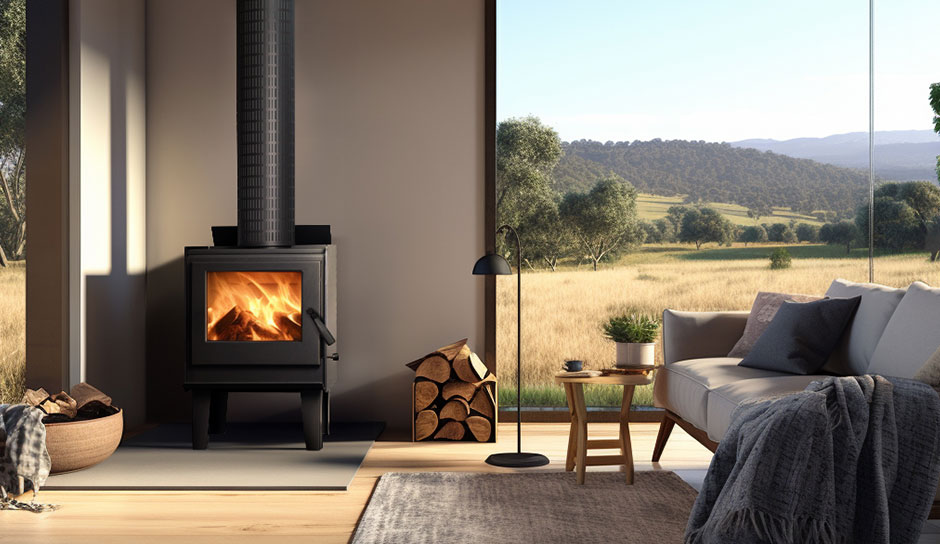Welcome to Our Guide on Coonara Wood Heater Care
When the chill of winter approaches, there’s nothing quite like looking forward to the comforting embrace of a warm, flickering fire from a Coonara Wood Heater. In this comprehensive guide, we’ll walk you through the essential steps and expert tips for maintaining and cleaning your beloved heater. Proper care not only ensures that your Coonara Wood Heater operates efficiently, providing that delightful warmth season after season but also guarantees its longevity and preserves its timeless aesthetic appeal. Whether you’re a proud owner of a Coonara or considering becoming one, this guide is crafted just for you, with insights straight from the heart of Coonara - the warmest Aussie legend for over 35 years.
Coonara Wood Heaters: Well Worth Maintaining
Coonara Wood Heaters embody the perfect blend of tradition and innovation, providing Australian homes with unparalleled warmth and comfort during the chilly months. For over 35 years, Coonara has been a cherished part of Australian households, celebrated not just for its superior heating solutions but also for its commitment to quality and the community. Each Coonara heater is meticulously crafted by hand, utilising top-grade, locally sourced, and imported materials, ensuring you receive nothing short of a masterpiece. With a legacy steeped in authenticity and excellence, Coonara is not just a heater; it’s an Aussie icon that has warmed hearts and homes alike.
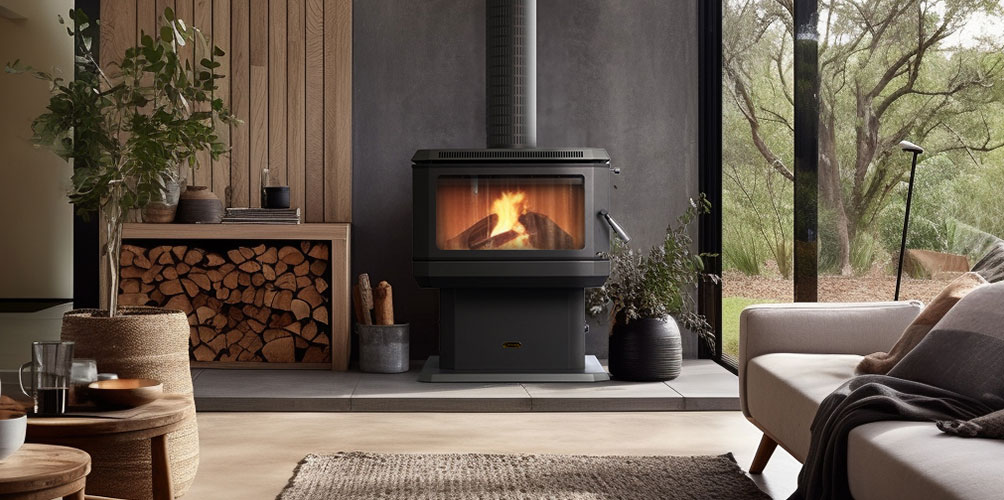
The Importance of Cleaning Your Coonara Wood Heater
Keeping your Coonara Wood Heater clean is not just about maintaining its handsome looks; it’s crucial for its safe operation, longevity, and efficiency. First and foremost, regular cleaning ensures safety for your home and loved ones. Over time, creosote, a highly flammable residue, builds up within the heater and chimney. By routinely removing this substance, you significantly reduce the risk of chimney fires, safeguarding your precious abode. Additionally, a well-maintained heater operates more efficiently, providing consistent warmth while being kinder to the environment. It allows your Coonara to breathe and burn wood more completely, minimising smoke and emissions. Lastly, there’s an undeniable aesthetic charm to a clean and well-kept wood heater. The vibrant flames dancing behind sparkling glass doors not only create a mesmerising focal point in your room but also exude an inviting atmosphere of warmth and comfort. In essence, regular cleaning is a small investment of time and effort that pays off by ensuring that your Coonara Wood Heater remains a safe, efficient, and beautiful centrepiece in your home for many winters to come.
Recognising When Your Coonara Wood Heater Needs Cleaning
Knowing when to clean your Coonara Wood Heater is essential for its optimal performance and your safety. One clear sign is a buildup of soot or creosote, visible as a black, flaky, or tar-like substance inside the heater or chimney. Creosote is a byproduct of burning wood, and its accumulation is inevitable. However, it's crucial to monitor and manage it because creosote is highly flammable. Creosote can ignite and lead to a dangerous flu fire if it gets too hot. To check for creosote buildup, you can use a flashlight to inspect the interior of the chimney. While it is not easy to check your flu for creosote, there's a safe way to ensure that it hasn't built up to dangerous levels: employ a chimney sweep to clean out the flu every year. More about that later! Additionally, a tell-tale sign of creosote buildup in your flu is an audible one: you may hear debris falling down the flue when it is windy outside, or when you first light the fire. Again, it may be time to call in an expert for a yearly flue clean.
If the glass door becomes blackened or difficult to see through, it’s a signal that cleaning is overdue. Additionally, if you notice a decrease in the heater's efficiency, such as taking longer to warm up the space or producing less heat, it might be time for a thorough cleaning. A strong, unpleasant odour emanating from the heater or chimney, especially when the heater is in use, also indicates a need for cleaning. Regular inspections, especially as the colder season approaches, can help identify these signs early. By being attentive to these indicators, you can ensure that your Coonara Wood Heater continues to function efficiently, safely, and effectively, providing the cosy warmth that it’s celebrated for.
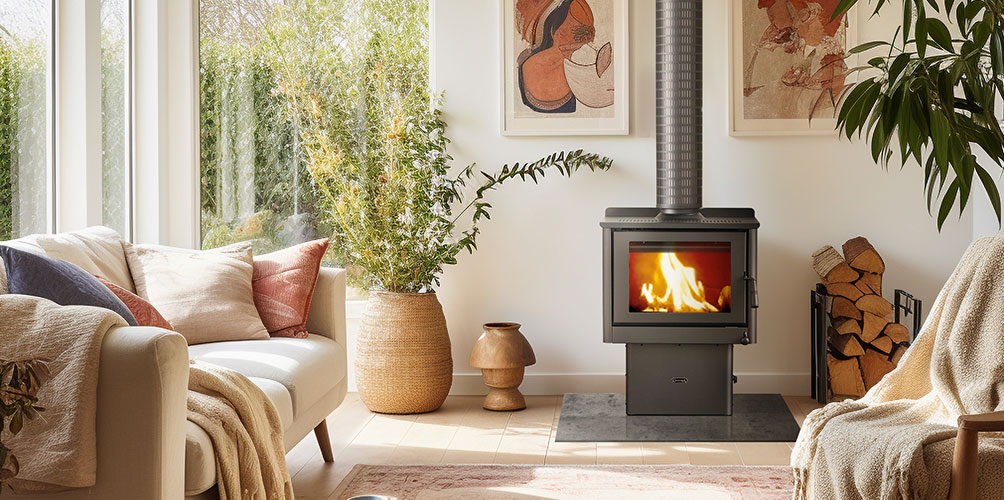
Maintaining the Exterior Shine of Your Coonara Wood Heater
A pristine exterior not only enhances the aesthetic appeal of your Coonara Wood Heater but also contributes to the overall ambiance of your space. Regular, light cleaning is key to maintaining its elegant appearance. For general upkeep, consider dusting the exterior surfaces weekly using a soft, lint-free cloth or a dusting brush with gentle bristles to prevent scratching the surface. This routine removal of dust and light debris helps maintain the heater’s lustre and prevents the accumulation of grime. If you notice any spots or stains, you can use a damp cloth with a mild detergent to gently wipe them away. Some Coonara customers like to use a mix of two parts water, one part vinegar and a dash of normal soap to clean the cast iron top of their heaters. Ensure to dry the surface thoroughly afterward to avoid any moisture damage.
For cast iron tops, occasional polishing with a specific cast iron cleaner can help maintain its sleek, polished finish. Your Coonara retailer can recommend the right product to use. Remember, a clean and well-maintained exterior not only reflects well on your heater but also on the care and pride you take in your home’s appearance. With minimal effort, your Coonara Wood Heater will continue to be a shining centrepiece in your living space, radiating not just warmth but also style and elegance.
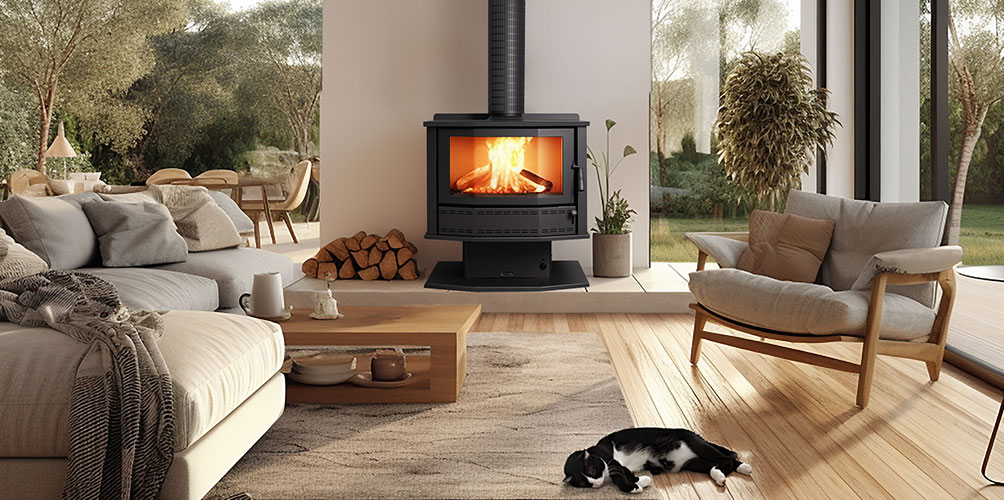
Effortless Steps to Clean Your Coonara Wood Heater's Glass Door
The glass door is the most obvious and daunting part of your Coonara wood heater when it comes to cleaning, but we have a simple and easy solution for you.
A clear glass door on your Coonara Wood Heater not only allows you to enjoy the mesmerising dance of the flames but also ensures you can monitor the fire's behaviour and fuel levels at a glance. For those who use their heaters frequently, cleaning the glass door before each use, like some seasoned users prefer, can significantly ease the cleaning process as it prevents excessive build-up of hard to clean soot and grime. Here’s a tried-and-true method from a seasoned Coonara user:
Start by crumpling a page of newspaper and dipping it into white vinegar that has been poured into a deep dish or empty ice-cream container along with a small dash of dishwashing liquid.Gently wipe the inside of the glass with the vinegar-soaked newspaper and let it sit for about 30 seconds. This brief soaking period allows the vinegar to loosen the soot and staining on the glass. After soaking, use the newspaper to wipe away most of the soot. For stubborn soot stains, dip the vinegar-soaked newspaper into the fine white ash in the firebox and gently wipe the glass. The ash and white vinegar solution acts as a mild wet abrasive, helping to remove tougher soot without scratching the glass. After this, clean and dry the glass with a fresh piece of newspaper, finishing off with a final wipe using a clean, dry cloth.
This method is not only effective but also utilises materials commonly found around the house, making it convenient and cost-effective. If you prefer not to clean before every use, doing this at least once a week or when you notice significant buildup will keep your glass door sparkling and clear, offering you an unobstructed view of the comforting flames within.
Never use abrasive cloths or steel wool to clean the glass as it will result in scratches.
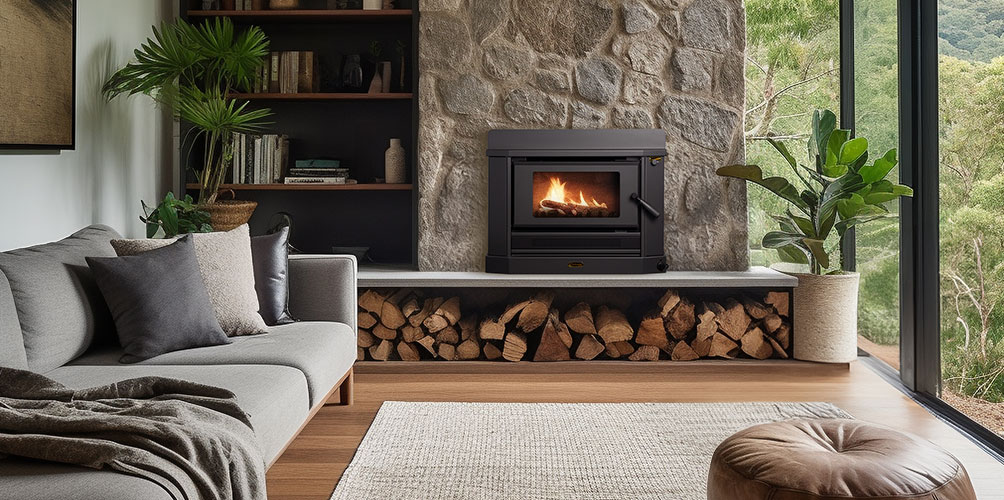
Maintaining a Clean and Efficient Firebox in Your Coonara Wood Heater
The firebox is where the magic happens in your Coonara Wood Heater, and keeping it clean is essential for efficient and safe operation. First and foremost, cleaning and removing ashes should only be done when the fire is completely cold to prevent any risk of burns or fire hazards. A cool firebox is safe to work in, and you can comfortably remove the ashes without worry.
Knowing when to clean out the firebox is straightforward. If you notice that the ash is beginning to accumulate to the point where it's reducing the space available for wood, it's time for a clean. Too much ash in the firebox not only limits the amount of wood you can add but also hinders the air circulation necessary for a good burn, leading to less efficient heating. An overflowing ash bed can also send ashes and embers spilling out when you open the door, creating a potential fire hazard and mess in your living area.
However, it's not necessary (or advisable) to remove all ashes. Many experienced Coonara users recommend leaving a small layer of ash at the bottom of the firebox. This thin bed of ash can actually assist in lighting the fire, acting as an insulator that holds heat and reflects it into the fire. It also protects the floor of the firebox from the intense heat of a burning fire. When cleaning, simply scoop out the excess ash and leave around a centimetre of ash spread evenly across the bottom.
Regularly cleaning out the firebox will ensure that your Coonara Wood Heater operates at its best, providing you with the maximum amount of warmth and enjoyment from each fire you light.
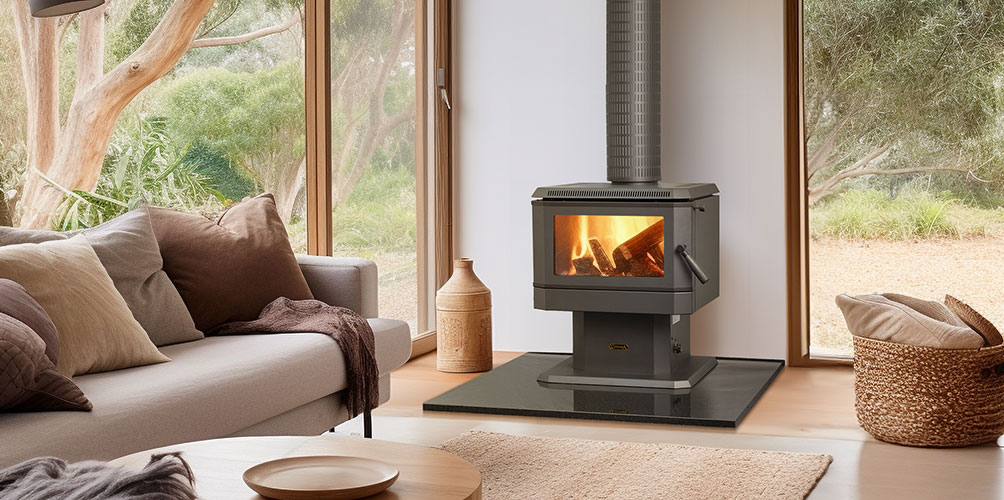
Schedule Regular Chimney Sweeps for a Safe and Efficient Coonara Wood Heater
Ensuring that the flue of your Coonara Wood Heater is clean is paramount for both safety and efficiency. The flue is responsible for safely directing the smoke and gases produced during burning out of your home. Over time, it accumulates creosote, a highly flammable residue formed from condensed wood smoke. If allowed to build up, creosote poses a significant fire risk.
To prevent this hazard, it's advisable to schedule a professional chimney sweep at least once a year, preferably before the onset of the colder months when you'll be using the heater more frequently. However, if you use your wood heater as a primary source of heat, or if you burn a lot of wood during the winter, consider having the flue cleaned more often, perhaps even twice a year. Frequent use leads to faster creosote buildup, necessitating more regular cleaning to maintain a safe and efficient system. Your chimney sweep can offer the best advice on how often your flue needs to be cleaned.
Professional chimney sweeps have the knowledge, experience, and tools to clean your flue thoroughly and safely. They'll not only remove creosote and soot but also check the integrity of your flue and heater, identifying and alerting you to potential issues before they become serious problems. This proactive approach helps extend the lifespan of your Coonara Wood Heater and ensures it operates safely and efficiently, providing you with peace of mind and a cosy, warm home.
Most importantly, never attempt to clean the flue yourself. Cleaning the flue usually requires professional equipment and also requires climbing up onto the roof! So be sure to call a professional. Your local Coonara retailer will most likely have a list of recommended chimney cleaning professionals that you can contact.
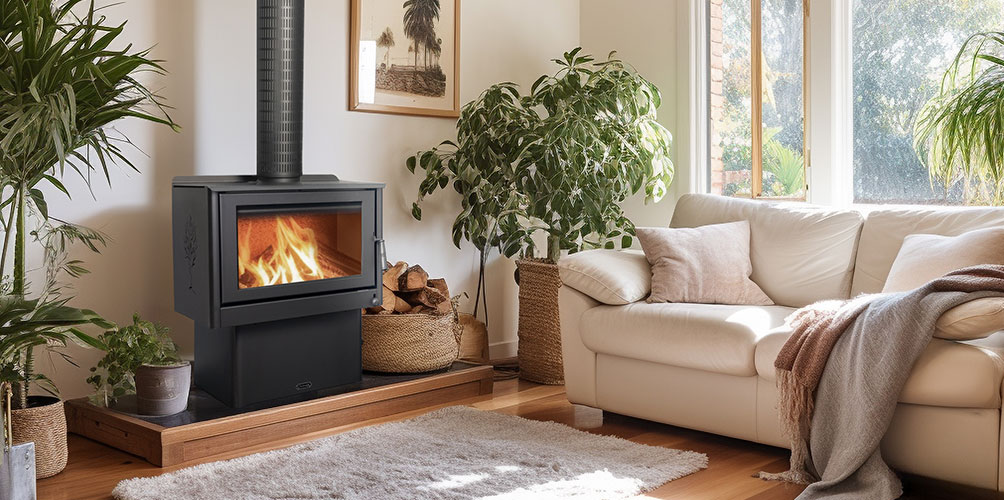
Practices to Avoid for the Longevity of Your Coonara Wood Heater
While maintaining your Coonara Wood Heater, it’s crucial to avoid using products and practices that could damage the appliance or pose health risks. Here are some important things to steer clear of:
- Avoid Harsh Chemicals: Steer clear of using aggressive cleaning agents like oven cleaners. These products often contain harsh chemicals that can corrode the metal components of your heater, weaken its structure, and potentially release toxic fumes when the heater is in use.
- No Steel Wool or Abrasive Pads: While it might be tempting to use steel wool or abrasive pads to scrub away stubborn soot or stains, these materials can scratch and damage the surfaces of your wood heater, especially the glass door. Over time, these scratches can accumulate, impairing your view of the fire and compromising the appearance and integrity of the heater.
- Don’t Use Flammable Liquids: Never use gasoline, kerosene, or other flammable liquids to clean your wood heater. They can easily damage your heater or start an unwanted fire. They should also never be used to light your fire. These substances can cause uncontrollable fires and are extremely dangerous.
- Avoid Burning Inappropriate Materials: Only burn suitable fuels in your Coonara Wood Heater. Avoid burning trash, cardboard, or treated wood, as these materials can release toxic fumes and create excessive creosote buildup that causes problems with your heater and requires more maintenance than necessary.
- Avoid the Heat: Never clean any portion of your wood heater when it is hot, or even warm. It's not hard to imagine why this is an unsafe thing to do. It's a real safety risk that is not worth attempting. "If you play with fire, you burn your fingers" is a good mantra to live by. It's also important to note that even cleaning the front of the glass when it is moderately warm can cause irreversible marks and stains that will be impossible to remove. Placing a wet cloth on the top of the wood heater when it is warm or hot can have the same effect. So, stick to one basic rule: Hot = Not!
By avoiding these practices, you not only ensure the longevity and efficiency of your Coonara Wood Heater but also safeguard the health and safety of your household. Proper care and maintenance, combined with the right practices, will allow you to enjoy the cozy warmth and charm of your wood heater for many years to come.
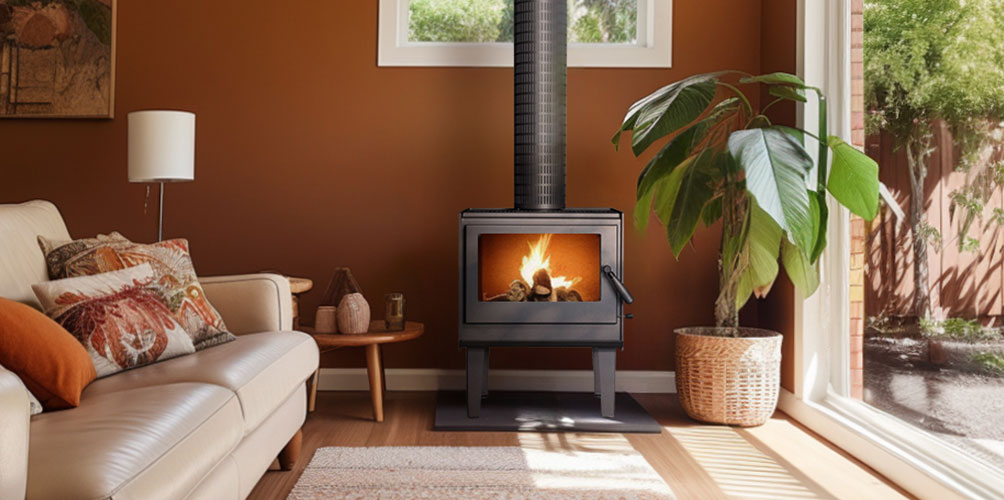
Wrapping Up: Ensuring a Clean and Efficient Coonara Wood Heater
Maintaining your Coonara Wood Heater is not just about preserving its aesthetic appeal; it’s fundamentally about ensuring it operates efficiently, safely, and lasts for many cosy winters to come. With the right care and attention, your heater will continue to be the heart of your home, providing warmth and comfort for your family and friends.
Key Points to Remember:
- Regular Cleaning: Consistent and regular cleaning of both the interior and exterior of your heater is essential for optimal performance and longevity.
- Safe Practices: Always ensure the heater is cool before attempting any cleaning. Safety should be your top priority.
- Professional Help: Schedule a professional chimney sweep annually, or more often if you use your heater frequently, to safely remove creosote and soot from the flue.
- Avoid Harsh Products: Never use aggressive cleaning agents, abrasive pads, or steel wool on your heater. Opt for mild detergents, soft cloths, and gentle brushes to prevent damage.
- Monitor Creosote Buildup: Be vigilant about creosote accumulation in the flue and the firebox, as it’s a fire hazard. Regular inspections and cleaning will help prevent dangerous buildup.
- Leave a Layer of Ash: A thin layer of ash in the firebox can aid in lighting fires and act as an insulator, but avoid excessive ash accumulation.
By following these guidelines and avoiding harmful practices, you’ll not only protect your investment in a quality Coonara Wood Heater but also ensure it remains a safe and beloved feature in your home. Here’s to many more evenings spent enjoying the gentle, comforting warmth and mesmerising flames of your Coonara!

